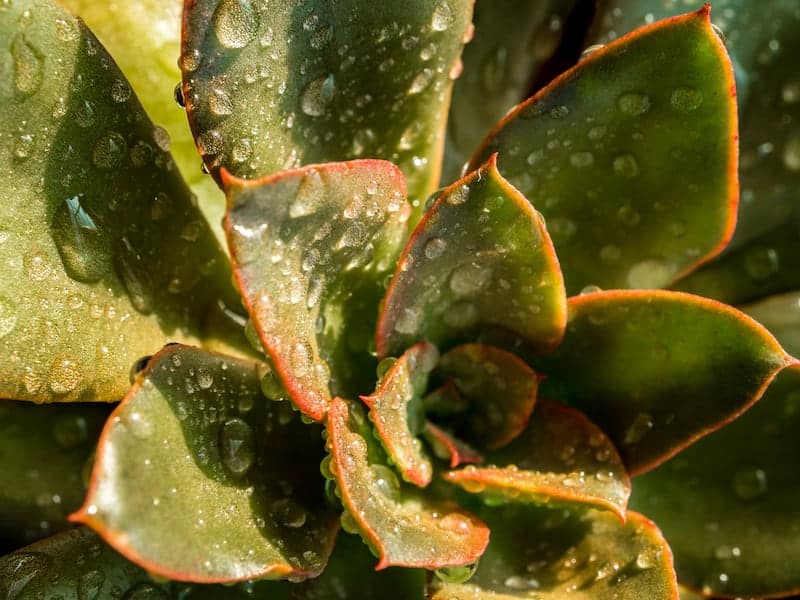
The graptoveria succulent is also known as ‘Fred Ives’ and is a beautiful and colorful plant that can be stressed to display various colors. If you want to learn about this interesting succulent, you certainly have come to the right place!
Read through this article if you want to discover how to care for a Fred Ives succulent, and learn how to propagate it, and more. We hope you find the following information useful!
Jump to:
Description
| Name: | Graptoveria Fred Ives |
| Soil: | Well aerated soil |
| Blooming: | Late Spring, early Summer |
| Light: | Full sun to partial shade |
| Water: | When the soil is completely dry |
| Propagation: | Cuttings, offsets and seeds |
In 1979, Van Kippley named the graptoveria succulent for Fred Ives of Shipley, Yorkshire. There is no denying that this succulent is one of the most attractive evergreen succulent plant types.
Graptoveria ‘Fred Ives’ has thick, pointed, bronze leaves that form rosettes that are up to 30 centimeters wide. If your plant is under stress, it could display various shades of salmon, pink, teal, blue, or coral which certainly is a beautiful site.
You can expect the graptoveria succulent to bloom bright yellow flowers that have orange or red centers. The plant can grow up to 60 centimeters tall.
Cultivars and Hybrids
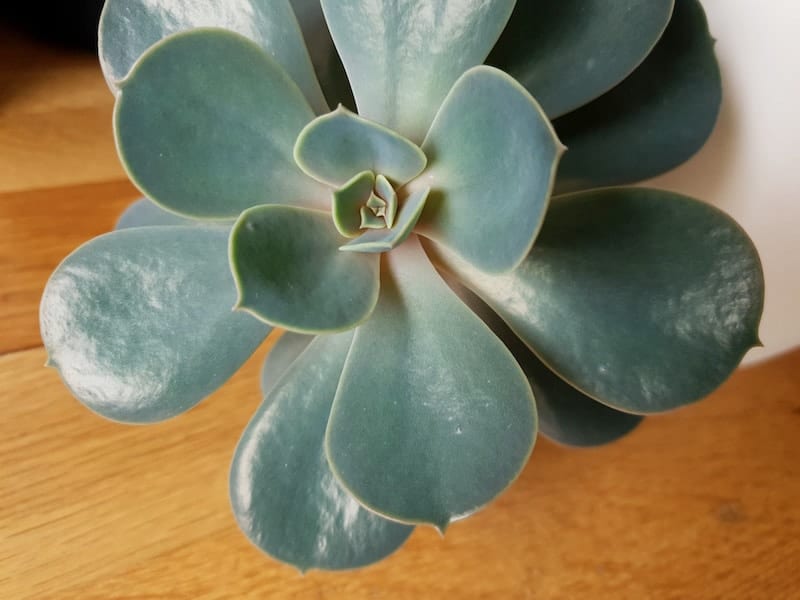
Buy it from:
Albert Baynes created this hybrid succulent by crossing a Graptopetalum paraguayense and a plant in the Echeveria gibbiflora family together. Baynes is one of the founders and proud members of the National Cactus and Succulent Society in England in 1946.
Care
Caring for the graptoveria ‘Fred Ives’ plant is very easy and won’t take up much of your time. These plants are ideal for busy people that love flowers and plants but don’t have a lot of time to look after them.
No products found.
Succulent growers need to be careful not to fuss over their Fred Ives plant too much as this could cause it to deteriorate quickly. For the best chances of success, follow the care instructions below.
Light
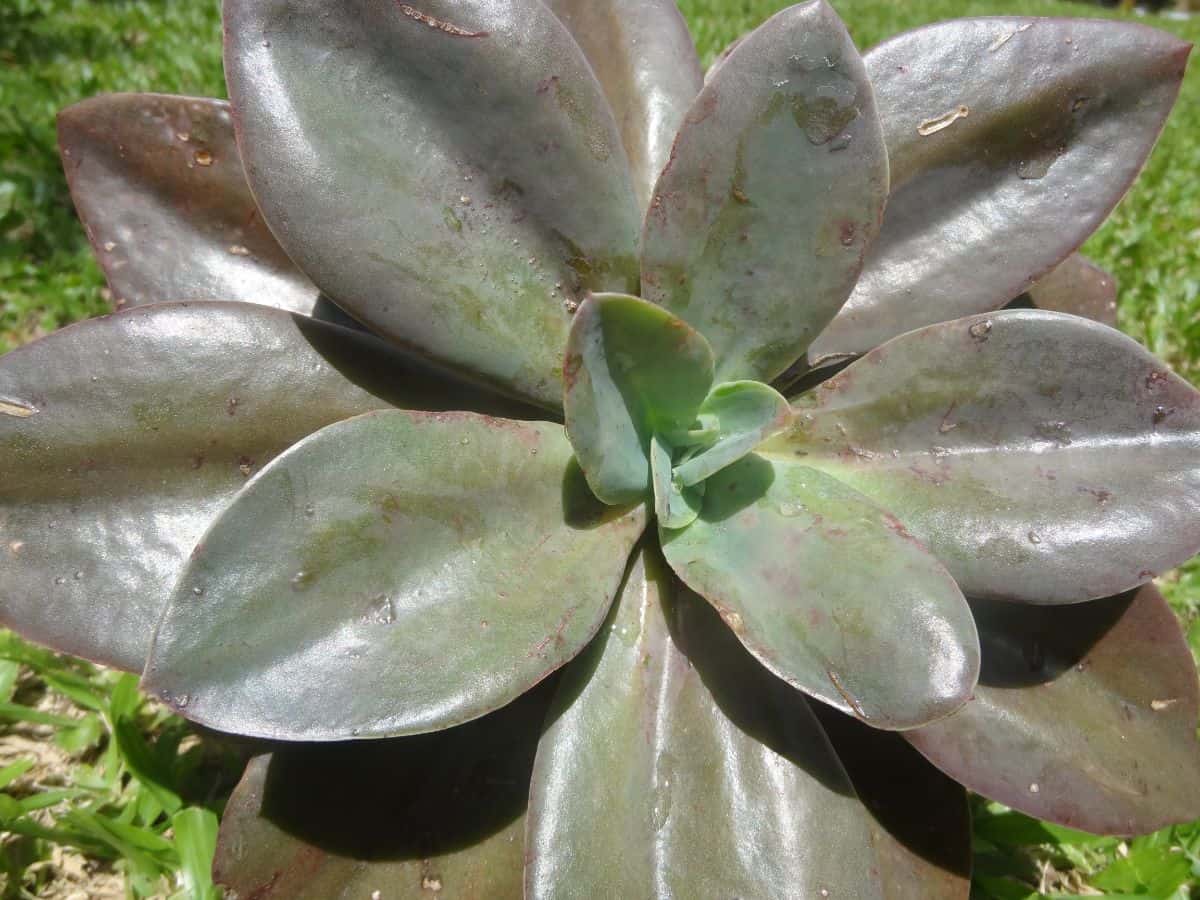
Plenty of sunlight is the graptoveria succulent’s best friend. These plants need to be situated in full sun or partial sun, regardless of whether your plant is growing indoors or in your garden. This plant needs strong sun in order to thrive, and if your plant is not in an area with sufficient sunlight, it will begin to wilt and discolor.
Water
The graptoveria ‘Fred Ives’ succulent has very low water needs. This is often where succulent growers go wrong and unintentionally drown their plants.
Use the ‘soak and dry’ method of watering for this succulent. Simply water the succulent from the base of the plant whenever the soil is completely dry. This may be more frequent during the hot summer months and less often during the winter, so do not follow a watering schedule when caring for your succulent.
If your plant is growing outside, you should move it to a shaded area during rainy weather to avoid overwatering. If you fail to move your succulent during heavy rain, it may die.
Temperature
This succulent is native to Mexico, so you can imagine how well it thrives in hot weather. You can also expect your plant to be drought-tolerant, but only when it is fully established.
Growing this succulent outside is ideal in USA hardiness zones 9 to 11; however, it also grows brilliantly in climate zones 17 to 24. Don’t worry if you do not live in an appropriate climate for this succulent; you can always plant it in a small pot indoors and have it as a table or desk display.
Soil
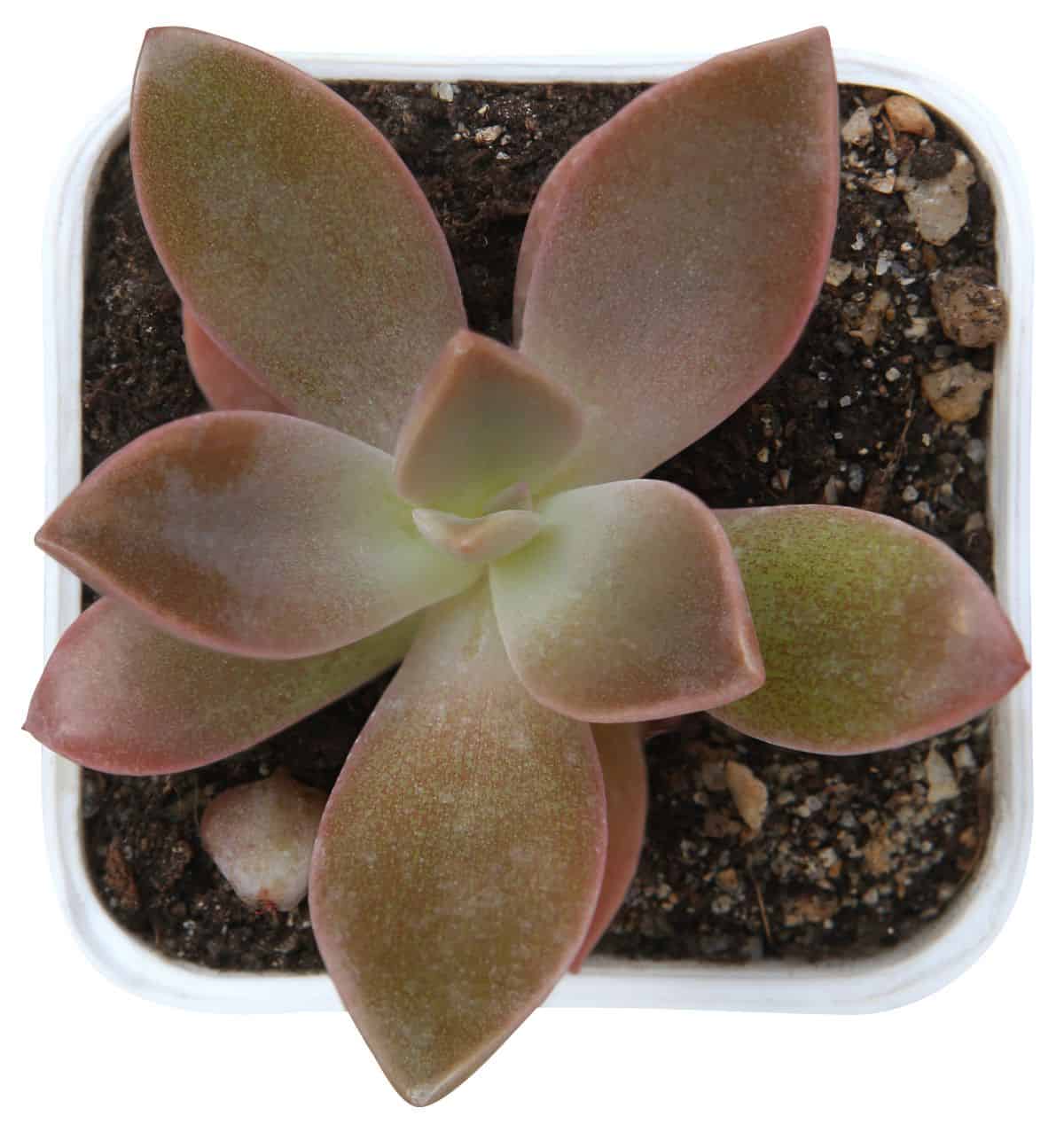
Getting the soil right is vital, and don’t presume that the succulents you buy from garden centers and online stores are planted in appropriate soil either. This plant grows well in sandy soil with medium to low moisture retention.
The soil needs to have brilliant drainage, and the pot or container you choose to plant it in should have plenty of drainage holes. If your pots do not have a lot of drainage holes, you can easily drill more to make them appropriate for growing succulents.
Graptoveria ‘Fred Ives’ can grow in acidic, alkaline, and neutral soil. If you are not confident in your soil choice, go for porous cactus soil that is unfertilized. You can always ask for advice at your local garden center.
Propagation
Propagating graptoveria ‘Fred Ives’ using leaf cuttings is one of the easiest and most successful ways to propagate this plant. You will need to gently twist and pull a healthy leaf from the plant’s main stem and inspect it to ensure that you haven’t left any parts of the leaf on the stem. Next, leave it to dry out for a few days before planting it in porous cactus potting soil.
Seeds
You can propagate this plant from seeds, but do not expect your plant to produce many seeds. For the best chances of success, order seeds from a reputable succulent seeds distributor and plant them one inch deep in porous cactus soil.
Cuttings
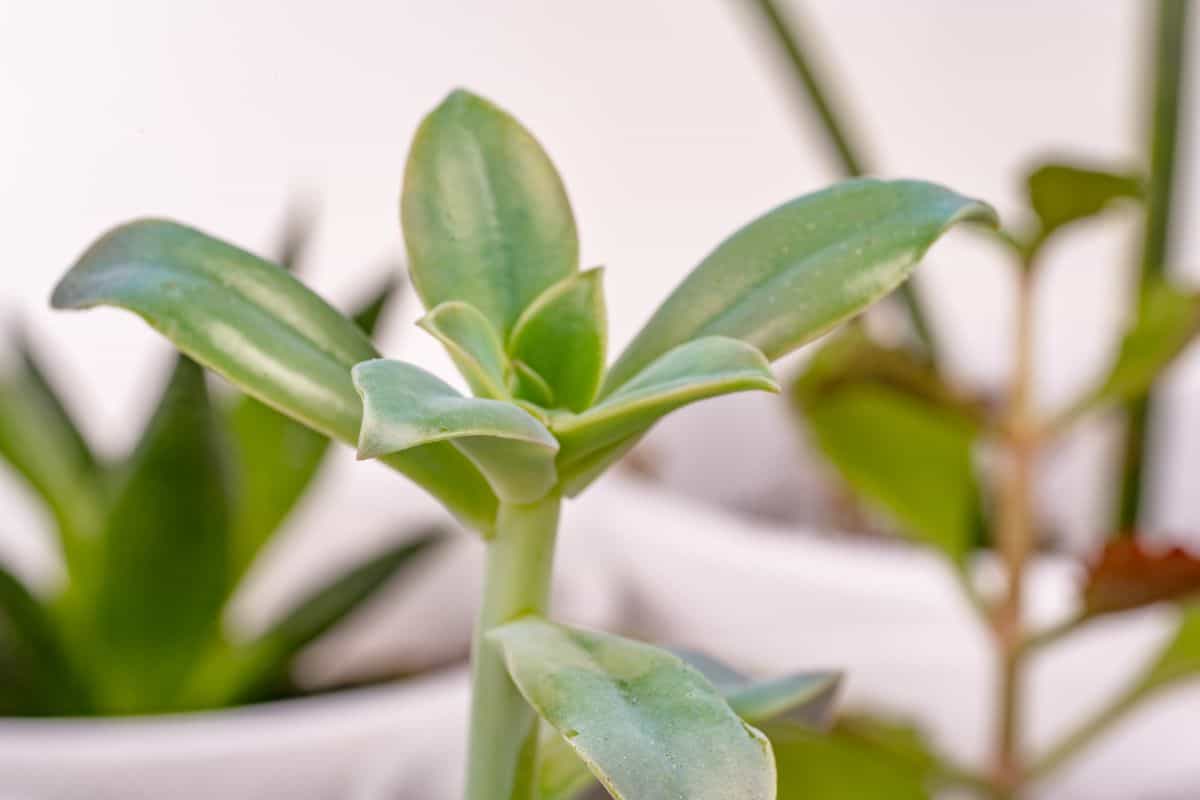
Remove a healthy leaf or stem from the main plant using a sterile pair of scissors of a very sharp knife. Once you have removed the cutting from the main part of the plant and are happy that it is a clean-cut, leave it to dry out for about a week before placing it in well-drained soil.
Offsets
Look out for offsets growing from the base of the main plant. These offsets should be removed in early spring so that they do not disrupt the main plant’s growth.
You can either dispose of the offsets or propagate them and grow new plants from the small bulbs you removed. Propagating offsets is very enjoyable as offsets have a high success rate.
Top Tip: Once an offset has well-established roots, you can put it in a pot and give it to a friend or family member as a lovely personal gift.
Common Pests and Problems
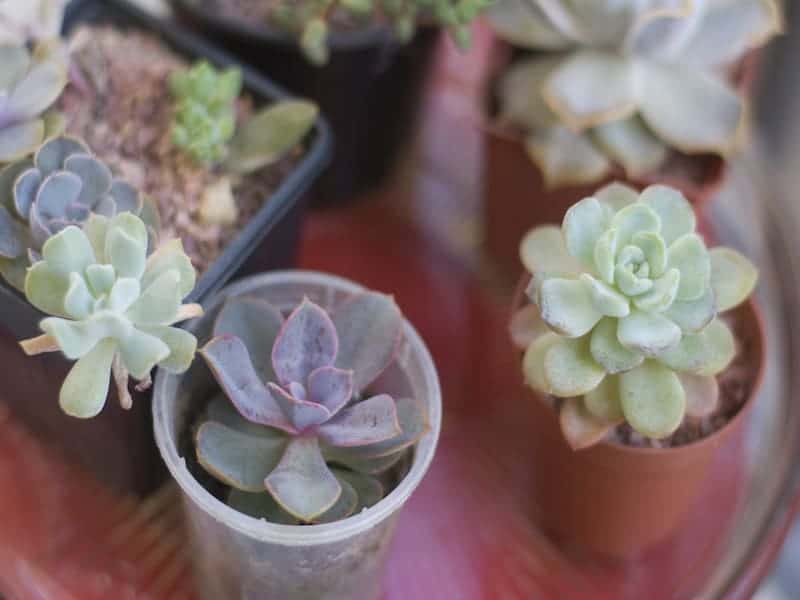
This plant is virtually pest and disease resistant. It is very deer resistant, so if you worry about deers eating your garden display, they will stay away from these plants.
One thing you should look out for is aphids, vine weevils, and mealy bugs. The best way to identify a bug problem is to inspect your succulent for nibbles and holes or any live bugs hovering around the plant. If you can’t see bugs around your succulent, but you can see an injury to your plant, take a look at this post to learn more about insects and plants.
Powdery mildew, fungus, and root rot may occur if your plant has been overwatered or planted in a pot without drainage holes or in soil that is too dense. The best way to tackle these issues is to re-pot your plant in well-drained soil and remove all of the plant’s unhealthy parts.
If the majority of the plant is black, brown, soggy, and limp, you should look for a healthy leaf or stem for propagation. This is the only way to save very unhealthy plants. Root rot usually goes unnoticed until it is too late, so make sure you follow the instructions and tips in this article to prevent this from happening to your plant.
We hope you found the information in the article useful! If you have some tips and tricks up your sleeves for growing graptoveria ‘Fred Ives’ successfully, we would love to hear about it!
Sources:
https://portal.ct.gov/CAES/Plant-Pest-Handbook/pph-Introductory/Insects-and-their-Injury-to-Plants
https://extension.illinois.edu/blogs/good-growing/2017-12-13-stepping-world-succulents


